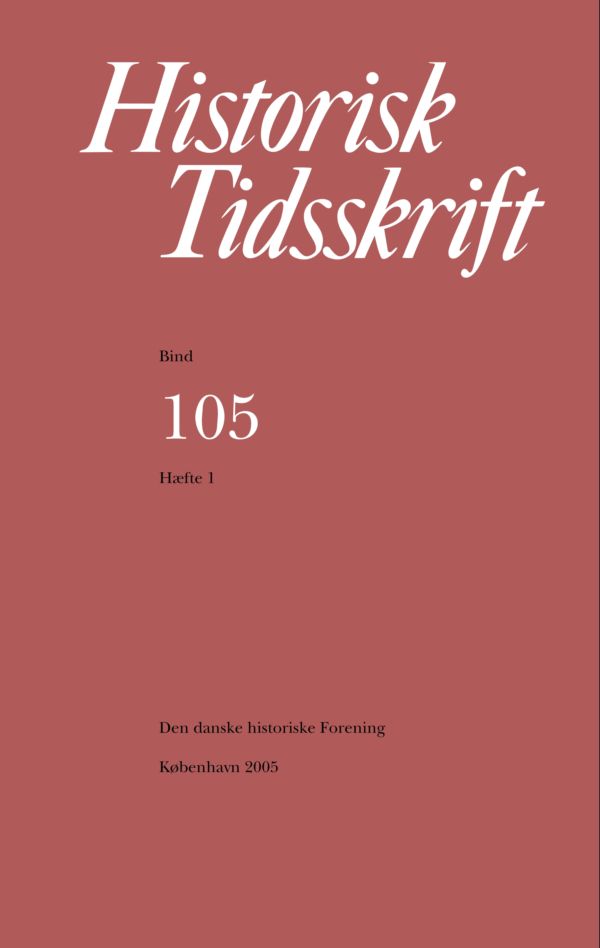Bocken, räven & dygdiga damen. Könsmetaforer i svensk-dansk propaganda under Stora nordiska kriget
Resumé
The Buck, the Fox & the Virtuous Lady Gender-metaphors in Danish and Swedish Propaganda during the Great Northern WarThe article examines the metaphorical imagery of the suffering maiden in domestic war propaganda during the Great Northern War (1700-1721). The source material is made up by ballads and royal decrees of Swedish and Danish origin, primarily stemming from the winter of 1709-1710 when the Swedish province of Scania (Skåne) served as the main theatre of war. Although the figure of the maiden had a feminine exterior, the imagery was to all intents and purposes a matter of masculinity. The texts were fashioned by men primarily addressing other men. And the suffering maiden belonged to a larger metaphorical repertoire that served to render meaning and legitimacy to the war in general and male soldiering in particular. By deconstructing the maiden and associated images, the analysis aims to expose the contemporaneous myths of manliness exploited by the propaganda makers. During the war in Scania, Swedish propaganda depicted the whole province as well as individual towns in the form of virtuous yet endangered ladies. These metaphorical women fulfilled two important objectives. To begin with, the imagery aimed at a disreputable portrayal of the Danish enemy through the manliness of the rival prince. The references to helpless women and the associated language of rape made Frederic IV and his military commanders into ugly examples of a debauched and dishonourable masculinity. In the case of Scania, these treacherous forms of masculinity were epitomised by the figure of the fox (räv): a linguistic pun on the name of the Danish commander-in-chief - Christian Reventlow - and a popular metaphor for people with ominous intentions. Secondly, the maiden's agony functioned as a call to manly deeds. Her cries were crafted to stir up aggressive and combative forms of manliness amongst the king's subjects. Also in this regard, the propaganda makers made use of various animal metaphors. For instance, the lady of Scania prompted her defenders to fight as he-goats or bucks (bockar)- a Biblical metaphor for force and authority as well as a reference to the prominent Swedish general Magnus Stenbock. Through this carefully gendered imagery, the propaganda addressed the »common man« in his capacity as husband or husband-in-waiting. It played upon the duty of the Lutheran husband to guarantee and if necessary die for the safety and wellbeing of wife and children. Close links were thus construed between marital and martial manliness. And the mythical notion of male sacrifice for endangered femininity was elevated as the very essence of masculinity. Thereby, the imagery of the suffering maiden contributed to a male ideal based on furious violence and martial sacrifice. During the Great Northern War, death on the battlefield was made to appear as the highest form of manliness any loyal subject ever could achieve.Downloads
Publiceret
Citation/Eksport
Nummer
Sektion
Licens
Ophavsret til bidrag i Historisk Tidsskrift tilhører forfatterne og Den danske historiske Forening som udgiver af Historisk Tidsskrift. For illustrationer gælder den ophavsret, som står anført i billedteksten. Ophavsretslovens almindelige bestemmelser gælder, hvilket vil sige, at ophavsretten gælder i 70 år efter forfatterens død. Bidrag i Historisk Tidsskrift må derfor, med forbehold for en ”moving wall” på tre år, frit downloades, læses, gemmes, anvendes og citeres (med kildeangivelse) i privat og videnskabelig sammenhæng, men de må ikke helt eller delvis genudgives af tredjepart, heller ikke i redigeret form, uden tilladelse fra forfatterne og Den danske historiske Forening. Henvendelse skal i så fald rettes til Historisk Tidsskrifts redaktion på histtid@hum.ku.dk.





